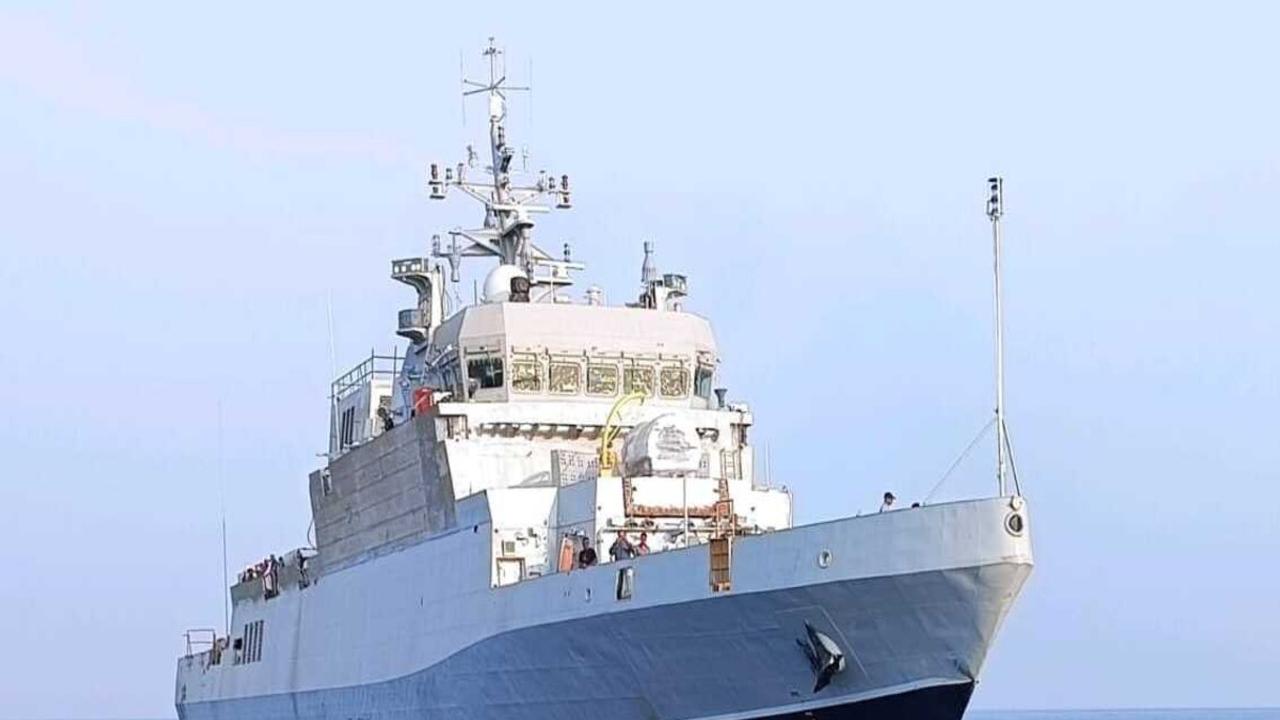The commissioning of INS Arnala on 18 June at Visakhapatnam has become a watershed moment in India’s maritime security infrastructure.
The commissioning of INS Arnala on 18 June at Visakhapatnam has become a watershed moment in India’s maritime security infrastructure. The first of 16 Anti-Submarine Warfare Shallow Water Craft (ASW-SWC) to enter service, this indigenously-built vessel is essentially an announcement of India’s move towards becoming the Indo-Pacific’s premier security provider, particularly in controlling critical maritime chokepoints that define global trade flows.
Breaking New Ground in Littoral Warfare
INS Arnala, the largest Indian naval vessel of its kind in service with the Indian Navy, is powered by a diesel engine-waterjet combination, measuring 77.6 metres in length and displacing over 1,490 tonnes. This technological configuration is actually tied to strategic capability.
The waterjet propulsion system enables the vessel to operate effectively in shallow waters, exactly where conventional larger warships cannot venture. Thus, the ship will be able to detect and target miniature or midget submarines and smaller UUVs (Unmanned Underwater Vehicles) in coastal waters with depths of less than 30 metres. This capability is understood to be paramount in the Arabian Sea’s unique hydrological environment, where the seabed remains remarkably shallow even 40 nautical miles offshore.
The vessel’s shallow draft of just 2.7 metres opens entirely new operational possibilities. Unlike traditional blue-water platforms designed for deep-ocean warfare, INS Arnala can patrol coastal waters, approach ports, and monitor critical shipping lanes where enemy submarines might attempt infiltration. This represents a fundamental evolution in India’s naval philosophy, from purely coastal defence to proactive littoral dominance.
The ASW-SWC Programme: Scale and Strategic Vision
The broader ASW-SWC programme encompasses 16 vessels, with Garden Reach Shipbuilders & Engineers (GRSE) and Cochin Shipyard Limited (CSL) each constructing eight units under a combined contract worth Rs 12,500 crores. This isn’t simply about numbers; it’s about creating a comprehensive anti-submarine network that can simultaneously protect India’s major ports and minor harbours.
With over 80 per cent indigenous content, these vessels embody the Aatmanirbhar Bharat vision. The programme has engaged over 55 Micro, Small, and Medium Enterprises (MSMEs), creating a robust defence ecosystem that reduces foreign dependency whilst generating significant economic multiplier effects. This indigenous capability ensures operational security and strategic autonomy, critical factors when protecting national maritime interests.
Implications for Regional Security Architecture
China’s expanding submarine fleet, now exceeding 70 vessels including nuclear-powered platforms, presents unprecedented challenges for regional maritime security. Pakistan’s acquisition of Chinese submarines further complicates the underwater threat environment. The ASW-SWC programme directly addresses these challenges by creating a comprehensive coastal anti-submarine shield.
The vessels’ ability to operate effectively in the peculiar shallow-water environment of the Arabian Sea provides India with asymmetric advantages. Enemy submarines attempting to approach Indian ports or threaten major naval assets will face detection and engagement by platforms specifically optimised for these conditions.
Strategic Chokepoint Control in the Indo-Pacific
India’s geographic position provides natural advantages in controlling critical maritime passages. The Malacca Strait, through which approximately 25 per cent of global trade transits, lies within India’s sphere of influence. About 55 per cent of Indian trade passes through this strategic waterway, making its security indispensable for national economic interests.
The Andaman and Nicobar Command, India’s first tri-service theatre command, maintains forward operating bases just 500-600 kilometres from the Malacca Strait. This positioning enables advanced surveillance and tracking of potentially hostile vessels, whilst ASW-SWC platforms like INS Arnala can conduct persistent patrols in the shallow approaches to this critical chokepoint.
Similarly, the Strait of Hormuz, through which over 85 per cent of India’s oil imports flow, requires constant monitoring. India’s mission-based deployments now maintain a continuous naval presence at five chokepoints across the Indian Ocean, stretching from the Gulf of Aden to the Malacca Strait. The ASW-SWC fleet will significantly enhance this capability, providing persistent anti-submarine coverage in areas where larger vessels cannot effectively operate.
(Ashu Mann is an Associate Fellow at the Centre for Land Warfare Studies. He was awarded the Vice Chief of the Army Staff Commendation card on Army Day 2025. He is pursuing a PhD from Amity University, Noida, in Defence and Strategic Studies. His research focuses include the India-China territorial dispute, great power rivalry, and Chinese foreign policy.)
Disclaimer: The opinions expressed are solely those of the author and do not reflect the views or stance of the organization. The organization assumes no responsibility for the content shared.
